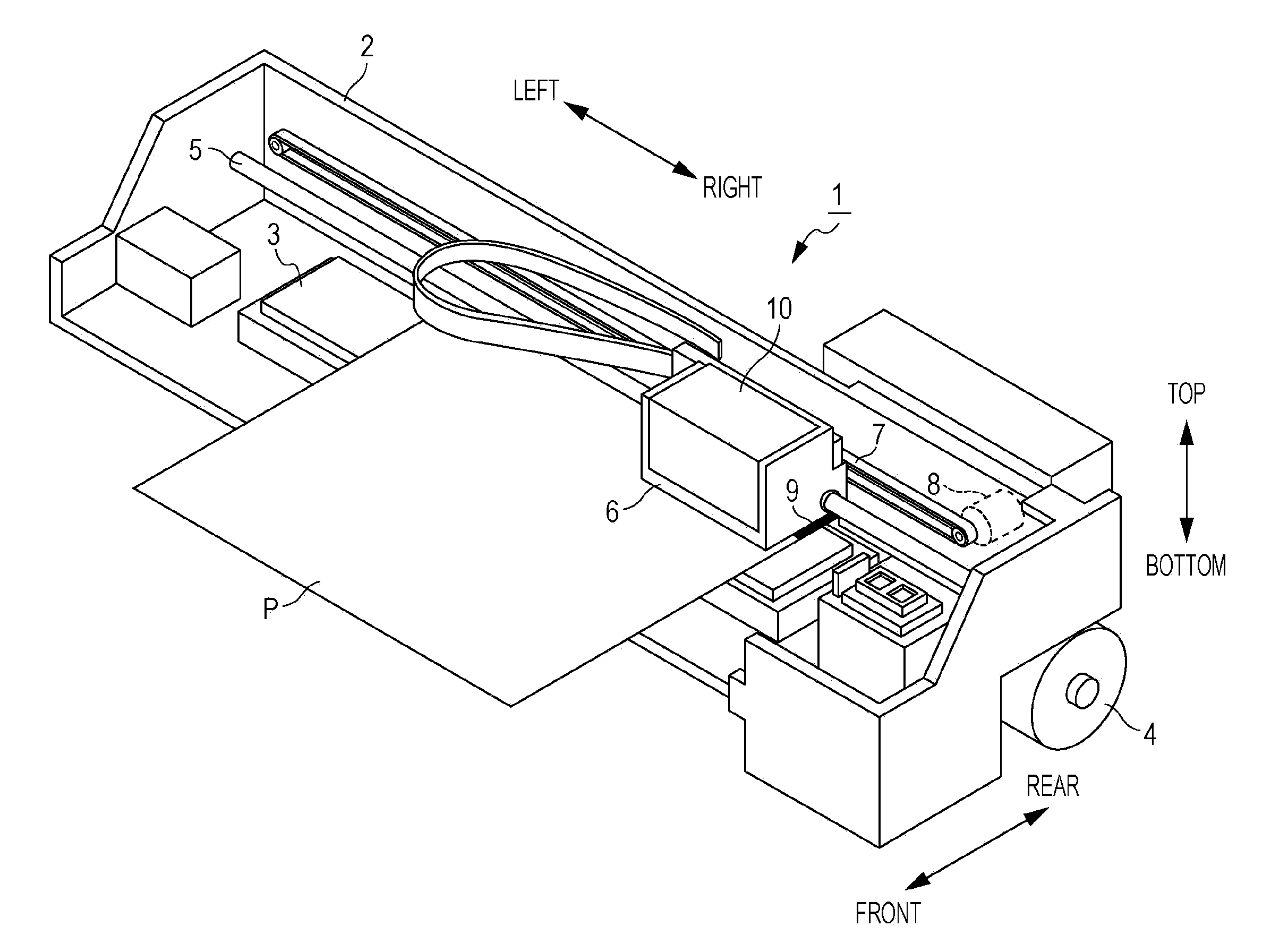Ink composition and printed article
a technology of composition and ink, applied in the direction of ink, duplicating/marking methods, thin material processing, etc., can solve the problems of reducing the gloss of formed images, affecting the quality of printed articles, so as to achieve low transparency and reduce the gloss of printed articles. , the effect of low transparency
- Summary
- Abstract
- Description
- Claims
- Application Information
AI Technical Summary
Benefits of technology
Problems solved by technology
Method used
Image
Examples
example 1
[0080]Polyvinylpyrrolidone (PVP, weight-average molecular weight: 10000) was heated at a temperature of 70° C. for 15 hours and was then cooled at room temperature. The PVP of 1000 g was then added to an ethylene glycol solution of 500 ml, thereby preparing a PVP solution. Ethylene glycol of 500 ml was put into another container, and silver nitrate of 128 g was then added. The resultant product was then sufficiently stirred with an electromagnetic stirrer, thereby preparing a silver nitrate solution. The silver nitrate solution was added to the PVP solution while the PVP solution was stirred with an overhead mixer at a temperature of 120° C. The resultant product was heated for approximately 80 minutes, thereby promoting a reaction. The resultant product was then cooled at room temperature. The produced solution was subjected to centrifugal separation with a centrifugal separator at a rate of 2200 rpm for 10 minutes. The separated silver particles were subsequently retrieved and wer...
examples 2 to 5
[0084]The types and amounts of components to be used for preparing the ink compositions were adjusted, thereby providing composition listed in Table 2. Except these, ink compositions were individually prepared in the same manner as employed in the example 1.
PUM
| Property | Measurement | Unit |
|---|---|---|
| transmittance | aaaaa | aaaaa |
| transmittance | aaaaa | aaaaa |
| transmittance | aaaaa | aaaaa |
Abstract
Description
Claims
Application Information
 Login to View More
Login to View More - R&D
- Intellectual Property
- Life Sciences
- Materials
- Tech Scout
- Unparalleled Data Quality
- Higher Quality Content
- 60% Fewer Hallucinations
Browse by: Latest US Patents, China's latest patents, Technical Efficacy Thesaurus, Application Domain, Technology Topic, Popular Technical Reports.
© 2025 PatSnap. All rights reserved.Legal|Privacy policy|Modern Slavery Act Transparency Statement|Sitemap|About US| Contact US: help@patsnap.com


